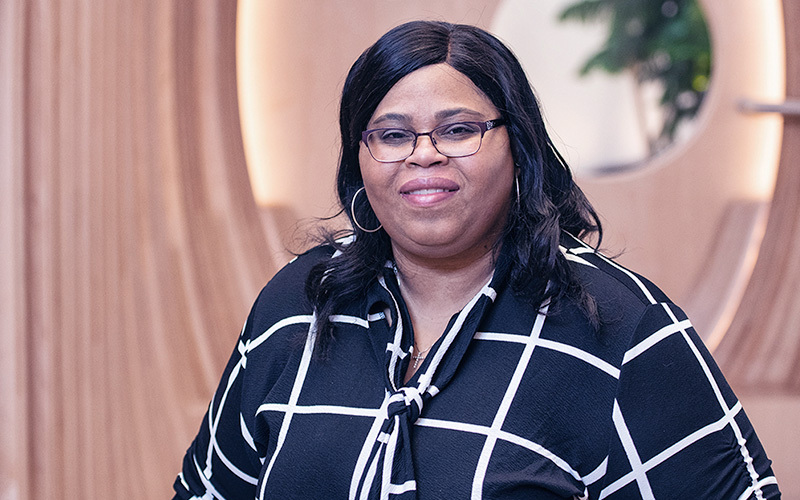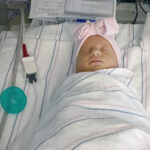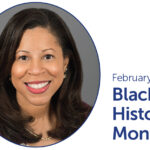Nurses Week 2022: Leading the way in advancing nursing documentation

Boston Children’s Hospital nurses are dedicated to providing high-quality care to patients and families, which is best accomplished through maximizing time with patients for assessment and direct care. However, studies have shown that the long documentation process in an electronic health record (EHR) too often detracts from direct patient care and is a common barrier to direct care.
Nursing and patient care operations leaders understand the need to streamline clinical documentation and have taken important steps over the past several years to improve nursing and inter-professional team documentation workflows. Optimizing the EHR process provides an opportunity to positively affect almost 3,000 registered nurses and advanced practice nurses at Boston Children’s and, most importantly, their patients.
The Nursing Documentation Optimization Project
The Nursing Documentation Optimization Project was guided by Katie Hunter, MSN, RN, CPN, senior clinical informatics specialist, under the leadership of Lynnetta Akins, MSN, RN-BC, director of Clinical Education and Informatics, Quality and Practice. The project aimed to reduce documentation burden and redundancy for nurses by providing a comprehensive view of the patient’s care. The redesigned tools further standardize and streamline clinical documentation by optimizing workflow, improving efficiency and interoperability and increasing documentation visibility between practice areas.
The project introduced tools and templates made available in physician and provider workflows, such as Dynamic Documentation and mPages, to staff nurses. Dynamic Documentation allows clinicians to add free-text entries and tagged data into notes for flexible and efficient clinical documentation. It leverages elements of the patient’s EHR to populate nursing notes as well as structured fields such as allergies, chief complaint, diagnosis, medications, measurements, orders, problems, and vital signs. Additionally, mPages provide powerful dashboards, and it aggregates data within the patient’s chart to improve clinical workflows.
Overall, the project eliminates unnecessary documentation from the nursing intake forms that has already been noted in other areas of the chart. It also ensures that the documentation is aligned with regulatory requirements and quality metrics. The nursing admission intake now includes only data that is considered essential, required, and clinically relevant to the patient’s care. As a result, these changes now contribute to greater efficiency and continuity of care, and they improve the patient experience for patients and families who access notes directly through the portal.
The changes have also contributed to nursing staff satisfaction by saving small but important increments of time for each nurse. While these modest savings in minutes have not resulted in changes in nursing staffing models, which are driven by state-mandated ratios in all critical care settings in Massachusetts, minutes saved do reduce cognitive workloads for nurses.
Success in the face of COVID-19
In March 2020, the COVID-19 pandemic and social distancing prevented the full implementation of Phase 1 of the Nursing Documentation Optimization Project in inpatient units. Most team members on the project were required to work remotely to decrease the volume of staff in the hospital at the height of the pandemic. However, during the go-live phase, it was optional for nursing staff to use the new workflow to become familiar with the new processes. The project team had to be creative to support nursing staff with implementation, and engaged with the nursing staff in July 2020 through Zoom and secure text messaging with Connect Messenger. The new workflow and documentation adoption was a success. The nursing staff achieved 100 percent compliance in completion of the nursing admission intake in a single session.
During Phase 2 of the Nursing Documentation Optimization Project, ongoing COVID-19 restrictions created staffing challenges because it decreased bedside nursing availability to participate in validation meetings. iView Optimization consisted of redesigning nursing documentation for assessment and frequent care documentation across all nursing venues. It reorganized the flowsheet bands by standardizing vital signs documentation and decreasing flowsheet bands.
Successful metrics outcomes Phase 1
- Decreased the average time it took for nurses to complete the Nursing Admission PowerForm by 12.8 percent.
- Decreased the clicks needed to complete the nursing admission assessment PowerForm by 14.8 average clicks.
- Post Go-Live summary totals decreased the number of clicks from 9,036 to 8,093 per patient encounter day and the average across positions from 155 to 139.
Successful metrics outcomes Phase 2
- Decreased total flowsheet bands from 718 to 73.
- Decreased the average time reviewing flowsheet.
- Reduced total sections in flowsheets from 609 to 444.
Bedside workflow capabilities and interdisciplinary communication
To further improve workflow and communication, in 2019 Boston Children’s launched the system-wide use of mobile smartphone devices that supported CareAware Connect applications. Akins collaborated with Lee Williams, PhD, MSN, RN-BC, NE-BC, NPD-BC, vice president and associate chief nurse, Clinical Education and Informatics, Quality and Practice, and CNIO; and Jonathan Bickel, MD, MS, senior director of Clinical Health Record, Enterprise Analytics, and Boston Children’s medical library and archives.
The new smartphone device allows nurses to scan medications, labs, and enteral nutrition at the bedside. Through a directory, clinicians can also locate their colleagues by name and reach people based on assigned roles at a specific time of day. This functionality has decreased the need for clinicians to access full workstations and other applications to understand role-based coverage and further enables clinician presence at the patient’s bedside and other clinical settings.
Long-term benefits of the Nursing Documentation Optimization Project
Nursing optimization will positively improve patient care by streamlining and standardizing nursing documentation. The project reduces time spent in the EHR and allows more time for patient care. It also improves patient and family satisfaction by eliminating duplicative admission intake questions.
“As the director of Clinical Education and Informatics, my goal is to streamline and standardize information systems and technology for clinicians to improve efficiency in nursing workflows and provide value-based care for patients and families through technology,” Akins says. “I want to give nurses tools to spend more time with their patients and less time with documentation or technology. As the future of healthcare evolves, my intention is to be at the forefront, establishing a new way of innovative thinking for the bedside nurse and other clinical team members through informatics, education, quality improvement, and research.”
Related Posts :
-

I’ve been there, too: What my baby’s tumor taught me as a NICU nurse
I had a toddler at home when I found out I was pregnant with my twins, Hannah and Sophie. Since ...
-

Nurses Week 2022: Leading an enterprise-wide response to COVID-19
The Infection Prevention Control (IPC) team at Boston Children’s Hospital plays an important role in the management of all ...
-

Nurses Week 2022: Patients at high risk for adverse events related to sepsis
Boston Children’s commitment to exceptional patient care and the best possible outcomes inspires innovation and growth. Both the hospital ...
-

Letters to our younger selves: Dr. Tyonne Hinson
Black History Month celebrates the achievements of Black Americans in U.S. history. Originally established in February 1926, the event recognizes ...





